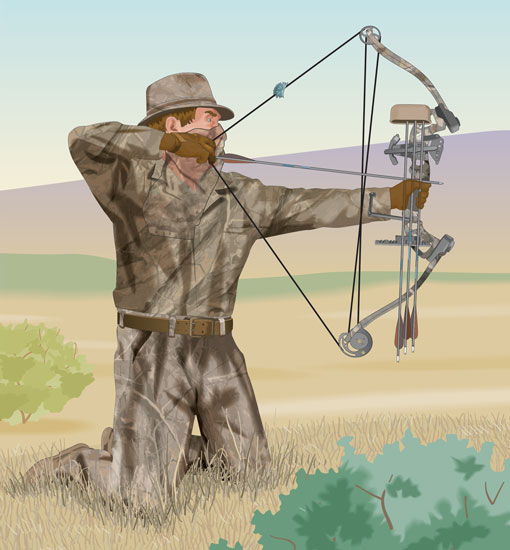Still Hunting, Stalking, and Glassing
Still hunting, stalking, and glassing are various methods of moving slowly through woods and pastures or along trails, hillsides, and mountain slopes. All of these methods require patience and are usually most effective from the downwind side. The animal must be completely relaxed and unaware of the hunter's presence.
- In still hunting, you move slowly and deliberately until you spot game—before it spots you. Generally, the hunter will take a few slow, deliberate steps and then stand or squat motionless for several minutes while scanning all surrounding areas for game. Still hunting requires exact attention to details such as wind, sunlight, and weather conditions.
- In stalking, the game has been spotted, and the hunter slowly and deliberately maneuvers into shooting range and position for an effective shot. While stalking, you should try to move on a diagonal line, rather than directly toward the animal, since this is a less threatening movement pattern if the animal has spotted you.
- Glassing is sitting for a long time at vantage points and spotting game from afar with binoculars or spotting scopes. After the game is spotted, you stalk it.
Advantages
- Usually provide the most effective methods for hunting big game animals, especially in the Western United States, Canada, and Alaska, where a good deal of walking and spotting are required.
- Allow hunters to find more active wallows, scrapes, rubs, tracks, and other signs of game.
- Offer an opportunity to enjoy the scenic beauty of wild landscapes and animal habitats.
Disadvantages
- Take a high degree of skill and even some luck to get into range for an effective shot without being spotted. Movements alert animals.
- Require caution to avoid being mistaken for game by other hunters.
